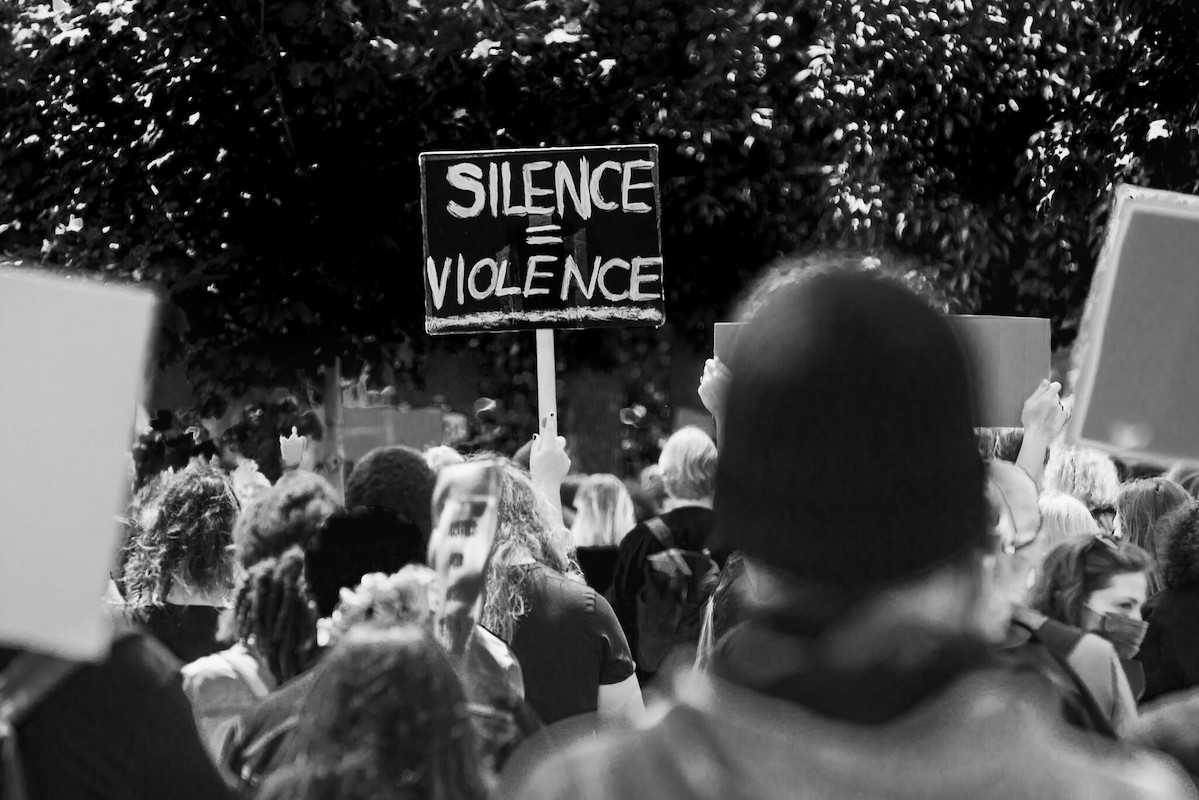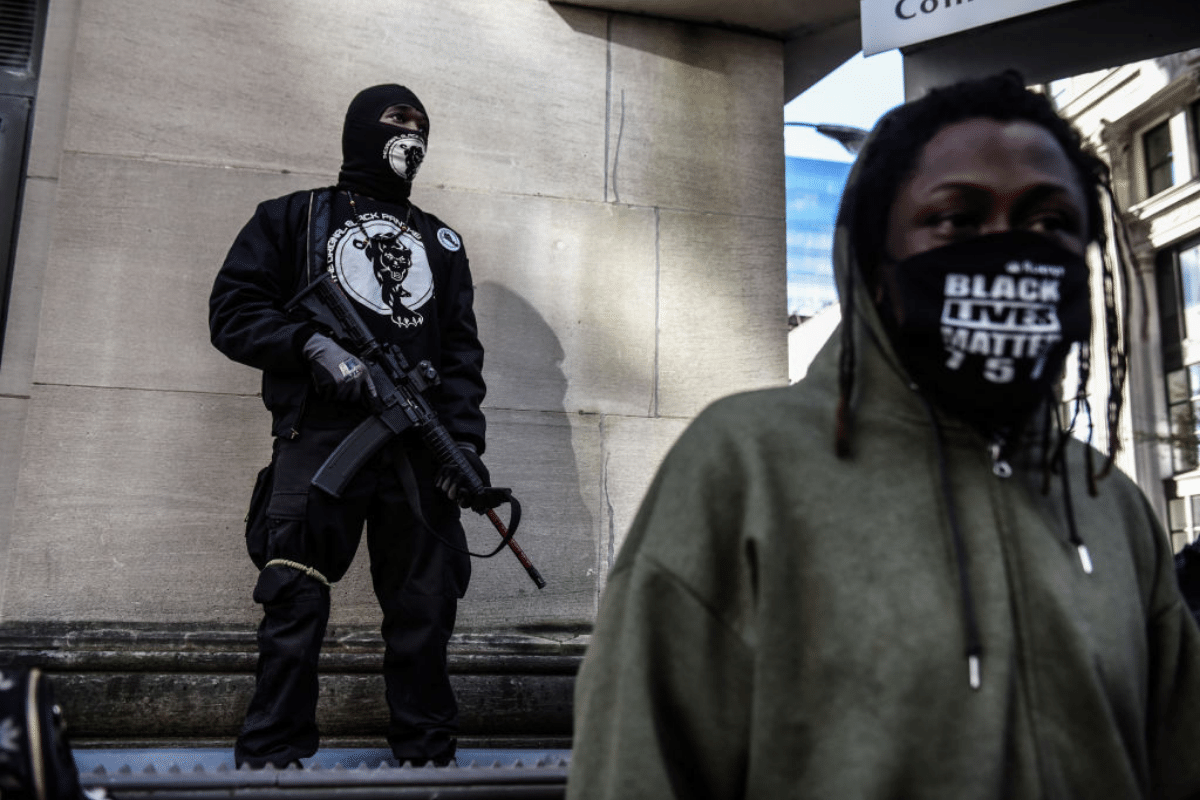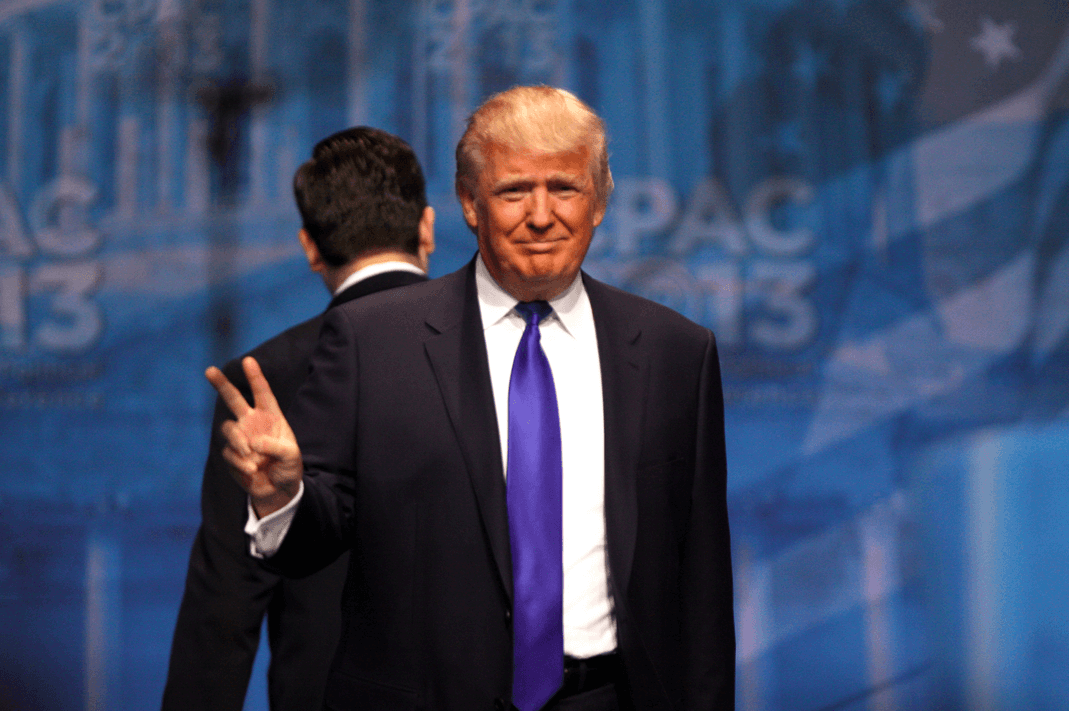Top Stories
At Social-Justice Law School, Feelings Trump Facts
Local anti-racism activists made Korchinski-Paquet a poster child amid the larger campaign to discredit the police.

On May 27th, Claudette Beals-Clayton called the Toronto police from a high-rise apartment in the city’s High Park North neighbourhood. Her 29-year-old daughter, Regis Korchinski-Paquet, was in a state of crisis and acting violently. Beals-Clayton wanted officers to take Korchinski-Paquet to the city’s Centre for Addiction and Mental Health.
Police arrived and coaxed Korchinski-Paquet into the building’s hallway. Then the woman asked if she could go to the bathroom before leaving, and police let her re-enter the apartment. Several officers followed her while family members waited outside. Moments later, the family reportedly heard “Mom, help!” Not long after that, Korchinski-Paquet plunged 24 floors to her death.
In the heat of the moment, a devastated Beals-Clayton told reporters that police “came in my apartment and shoved [my daughter] off the balcony.” A man identifying himself as Korchinski-Paquet’s cousin made similar claims on Instagram. Before waiting for any kind of corroboration, reporters from Vice repeated these claims and vaguely linked the death to George Floyd, the Minneapolis man shown on video suffocating to death with a police officer’s knee on his neck last month. Like Floyd, Korchinski-Paquet was Black. The obvious implication here was that her death might be a race-motivated murder.
I spent five years working in one of Canada’s biggest newsrooms, so I know that it’s typically seen as irresponsible to publish such incendiary claims without the credible account of an eyewitness or some other form of proof. And so, even amidst the decline in journalistic quality and capacity on many municipal news desks, I was still surprised when I saw more reputable outlets pick up the Vice story, including the implication that racist police officers may have thrown a suffering woman to her death from a balcony.
Even if police officers were inclined to do such an unspeakable thing—is it credible that they would do so in broad delight, with at least four fellow officers and multiple family members close by? Korchinski-Paquet reportedly had been suffering seizures for years, and this was not the first time the family had summoned the police. Previous visits had involved reports of an occupant brandishing a knife. In the tragedy that unfolded last month, a police source told a local newspaper, Korchinski-Paquet had barricaded the balcony door using an appliance, and then slipped while trying to escape by jumping onto a neighbour’s balcony. I can’t corroborate that story. But it certainly makes a lot more sense.
The day after this tragic incident, Beals-Clayton’s lawyer was asked by the Toronto-based Globe and Mail newspaper about the allegation that Korchinski-Paquet was pushed. He responded cryptically that Korchinski-Paquet’s mother “had not shared this version of events with me.” Later, the lawyer told reporters, “I can verify on behalf of the family that this”—Korchinski-Paquet’s being pushed or thrown—“was not witnessed by the mother. However, at the time of the statement, that is what the mother believed.”

Yet the damage was done. Local anti-racism activists made Korchinski-Paquet a poster child amid the larger campaign to discredit the police. And in many social-media forums, it is now simply taken for granted that the police had some nefarious role in Korchinski-Paquet’s death. As of this writing, at least one Canadian magazine still has a tweet up, declaring, “Family members and witnesses have reported that Regis Korchinski-Paquet, a 29-year-old Black woman, was killed by being shoved off an apartment balcony by Toronto police on the evening of May 27, 2020.”
It’s certainly true that Toronto’s Black community suffers more than its proportionate share of violent police interactions. CBC News reports that, of the 52 people who died in interactions with Toronto police between 2000 and 2017, over a third (19) were Black (all men, no women)—a proportion that is more than three times the Black share of the city’s population. Though most were armed at the time of death, and mental illness often is a complicating factor in such cases, the numbers raise serious questions about whether police are too quick to use lethal force against Black men. Yet they tell us nothing in particular about the tragic fate of Korchinski-Paquet.
Her death triggered an investigation by Ontario’s Special Investigations Unit, which occurs automatically whenever there is a police-involved death in the province. Police Chief Mark Saunders, who happens to be Black, spoke out to say that “a lot of [the narrative around Korchinski-Paquet] is misinformation, a lot of it is lies,” and pleaded for the public to “wait for the truth.” But amid complaints of media leaks, Beals-Clayton refused to speak to investigators, while a GoFundMe organized by Korchinski-Paquet’s sister raised more than $450,000. Anti-racism advocates organized marches through the downtown core to demand “Justice for Regis.” The incident is also being cited as proof that Toronto needs to “defund the police,” a cause that’s now being seriously considered by city councillors. On June 8th, Chief Saunders announced his resignation, saying that he wants to focus on preventing the problem of “young Black boys killing young Black boys.”
Even if lawyers have a bad reputation, it would serve us well to be a little more lawyerly in situations like this, waiting for facts and evidence to emerge before jumping to sweeping, emotionally charged conclusions. Yet at Toronto’s Osgoode Hall Law School, where I study, no one’s seemed much in the mood for fact-finding. The student union released a statement on behalf of the Black Law Students’ Association (BLSA) declaring that Korchinski-Paquet was killed “as a result of police violence” that “systematically targeted towards Black people.” Other school groups immediately joined the chorus. We were instructed that “individuals who are not Black” are hereby required to “act in solidarity with the Black community by listening to and amplifying the voices of Black people by starting with ‘I hear you, I believe you.’”
Which is awkward, because even the family’s own lawyer admitted early on that he did not “believe” the uncorroborated reports that police officers murdered Korchinski-Paquet in cold blood. And so it’s not clear why anyone should be required to “amplify” the voices of those who repeat this erroneous claim. In fact, spreading misinformation can inflict real harm. Yes, it’s terrible that about one Black Torontonian per year dies at the hands of the police, and those officers who behave illegally should be investigated and prosecuted as criminals. But from the rhetoric that’s now become common, one might think that Toronto police were conducting some kind of continual pogrom in Black neighbourhoods. That claim is unsupported by the numbers, and it likely makes Black Torontonians unnecessarily fearful.
“We are all disgusted by the death of George Floyd and countless others who have been killed by racism and police brutality,” I wrote on my school’s Class of 2022 Facebook page. “However, I would encourage Osgoode students to do some research before repeating the claim that Regis Korchinski-Paquet was the victim of violence, racism or police brutality. There is not one shred of evidence that her death was anything but a tragic suicide or accident. The claim that she was pushed was made in the heat of the moment by distraught family members who did not witness her final seconds, and her family’s lawyer has walked back that unsupported claim. Regis was in the middle of a mental health crisis and police were, by all accounts, trying to save her life. As future lawyers, [we shouldn’t] make baseless, incendiary claims… I can’t think of a more serious accusation than hate-inspired murder. Let’s wait for some evidence before making these kinds of allegations.”
About 45 minutes later, my post disappeared. The student union deleted it. The class president, whose name I won’t mention here, then wrote to me to explain why:
We received many complaints and requests from students in the Osgoode community that your comment be removed. I think that it is only fair that you are informed as to why: Right now, many students in our community are hurting, grieving, and are looking to each other for support. Students felt that your post was inciting dismissal of the anti-black racism that black students are consistently facing and particularly now, in a time where students are looking for support, they did not appreciate this inquisition that they felt was harmful to the communities that are already hurting. We want to make a safe space for Black, Indigenous, and Students of Colour in our Osgoode spaces and sometimes, especially now, this means elevating the voices of the communities impacted the most. This is why we supported and shared BLSA’s statement. [W]e are not the triers of fact here and this is not a trial for the facts, it is a chance to show support and solidarity to our fellow students and it is important we leave space for that and let these students feel safe and supported. When students feel unsafe or attacked in our Facebook spaces, we take action to ensure the community is a safe one and for this reason, we deleted the comment. I hope you understand that this is not an attack on you, rather it is the way we choosing to support the students who need it most.
Nothing about my post was “inciting dismissal of anti-black racism.” So I suggested to the student union that they rethink their decision, and I asked for a copy of the applicable rules. To which I received the following response: “We operate based on our Constitution, which is posted publicly on our website. While we did not post specific rules to the Facebook page, we will do so now. Our removal was in line with Article VI, s. 11.j: ‘Actively solicit the opinions of equity seeking groups and work with those groups and other partners for the promotion of a discrimination free, equitable, and safe campus.’ The complaints we received were from equity seeking groups and individuals who felt that post did not contribute to a discrimination free, equitable and safe campus, which is why we removed it.”

Let’s be clear: This was a spat among law students about the contents of a social-media page. In the grand scheme of things, it’s not a big deal, and I’m not trying to play victim. But I do want to highlight what this incident says about an approach to truth-seeking that is now fashionable even among soon-to-be lawyers. According to this new approach, apparently informed by critical race theory and postmodern approaches to truth-seeking, evidence doesn’t matter much, because there is no “objective truth.” What matters is that we assess how much power people have, based on superficial characteristics like race and gender, and then let the most oppressed person’s version of events prevail. In the eyes of many of my peers, I must accept that the police killed Korchinski-Paquet because certain Black voices on campus say she was killed by police. If I don’t, I’m “not contributing to a discrimination-free, equitable and safe campus.”
Some professors also see the world this way, apparently. In the first weeks of my constitutional-law class, Professor Jefferey Hewitt told students that while Western legal systems are focused on getting to the “actual” truth, Indigenous people understand truth as something “fundamentally different.” To them, truth isn’t “objective and singular,” Hewitt says. “You cannot say from viewpoint A that B is wrong because you didn’t see what they saw.”
It’s true that different people can have different perspectives, but it’s wrong to assert that there is no objective truth. The Earth is round. The sky is up. Two plus two equals four, even if the party says it’s five. Korchinski-Paquet was either pushed or not, and the whole point of the legal system is to get to the “actual” truth of such questions through the systematic presentation of evidence and a clash of arguments.
Yet it’s impossible to know how many of my classmates are truly vested in the more fashionable postmodern approach, since, as this episode shows, a small handful of highly motivated actors now have the power to shut down discussion. And since no one wants to be cast as the villain, most of us just play along. Several students whom I’d never spoken with before reached out to tell me they were upset about the fact that my post was deleted, but won’t say so publicly because everyone is keeping tabs on everyone, and even a single social-media misstep can cost you a job following graduation.
They’re not crazy to entertain such fears. My whole first-year class was required to sit through a lecture earlier this year from Lisa Taylor, a journalism professor at Toronto’s Ryerson University. She walked us through examples of social-media posts that—justifiably, in her view—led various public figures to be pushed out of their jobs. One was a former high-ranking manager at CBC who was hounded out of the organization after he’d chimed in on a flippant, politically incorrect tweet. Taylor indicated her approval for this result. She also gave us a list of progressive Twitter accounts that we should follow if we wanted to get on the winning team.
One of the students who wrote to me told me that he wasn’t sure what to make of Korchinski-Paquet’s death, but that he “wholeheartedly supports [my] attempt to have a dialogue about it. Lawyers are the agents for our truth-seeking endeavours in the justice system, and that requires interrogating our deepest assumptions, even when it may feel uncomfortable.” At the same time, he added: “Many of us who find the decision questionable will not publicly speak out about it for risk of damaging our professional reputation with future colleagues and employers. This aversion comes at the cost of pursuing the truth, but it’s a decision we all need to personally make given our individual circumstances.” Ironically, that statement—and at least three others that I’ve saved—came from people whom the student union would describe as members of “equity seeking groups.”
Thankfully, there are a few law-school refuges for students like me—including the Runnymede Society, a non-partisan club that promotes discussion about liberty, constitutionalism, and the rule of law by inviting speakers with views from across the political spectrum. These are causes that once would have attracted broad public support among law students. But in 2020, they’ve become surprisingly risqué. When I helped organize an event about the lack of ideological diversity in law schools, someone kept ripping down the posters. Needless to say, posters promoting “the Marxist Solution to Conflict with Iran” (who knew there was one?) stayed up.
Many Quillette readers already are quite familiar with the manner by which postmodernism, critical theory, and related doctrines have made extensive inroads into the liberal arts, corroding our ability to define objective reality. But the more recent metastasis of these ideas into law is especially worrying, because respect for objective truth, due process, the presumption of innocence, and equality before the law are all bedrock principles of our legal tradition. You can’t try a case if everyone is allowed to inhabit mutually exclusive realities based on their own impression of what makes them feel “unsafe.” Even panel discussions, which once might have featured competing views on these trends, increasingly have been turned into rallies favouring one point of view. I once attended a guest lecture in property law, at which all three speakers shared the view that Indigenous people hold title to all of what we call Canada.
I should say that there do remain many professors who believe in the value of debating ideas. Osgoode’s associate dean of students, for instance, accepted the Runnymede Society’s invitation to moderate a panel discussion on the United Nations Declaration on the Rights of Indigenous Peoples (UNDRIP). I had long objected to UNDRIP on the basis that it grants rights on the basis of race, which I see as incompatible with liberal, democratic values (a view that was articulated at the event by Queen’s University law professor Bruce Pardy). But Osgoode professor Karen Drake, an expert in Indigenous rights, among other subjects, presented a persuasive argument in support of UNDRIP as an instrument that protects rights asserted on the basis of nationality, not race. Moreover, she made her case without claiming some higher system of knowledge that supersedes conventional legal analysis, or otherwise appealing to meta-rules that serve to dismiss whole areas of discussion as unsafe or racist. As someone skeptical of UNDRIP, I found Professor Drake helped me see the other side of the argument. We need more of this.
As I enter my second year of law school, I’m left wondering how many of my classmates are going to be professionally functional once they graduate. Do they think they’ll be able to hit “delete” on arguments that they regard as upsetting? Do they expect judges to accept their clients’ claims on the basis of membership in an “equity seeking group”? It’s possible they believe that by the time they’re practicing lawyers, their ideological fellow travelers will have been appointed to the bench. And who knows—that may happen. But if not, their careers may be quite short. My hunch is that a good many of them will simply show up in court and not know how to make an argument.






